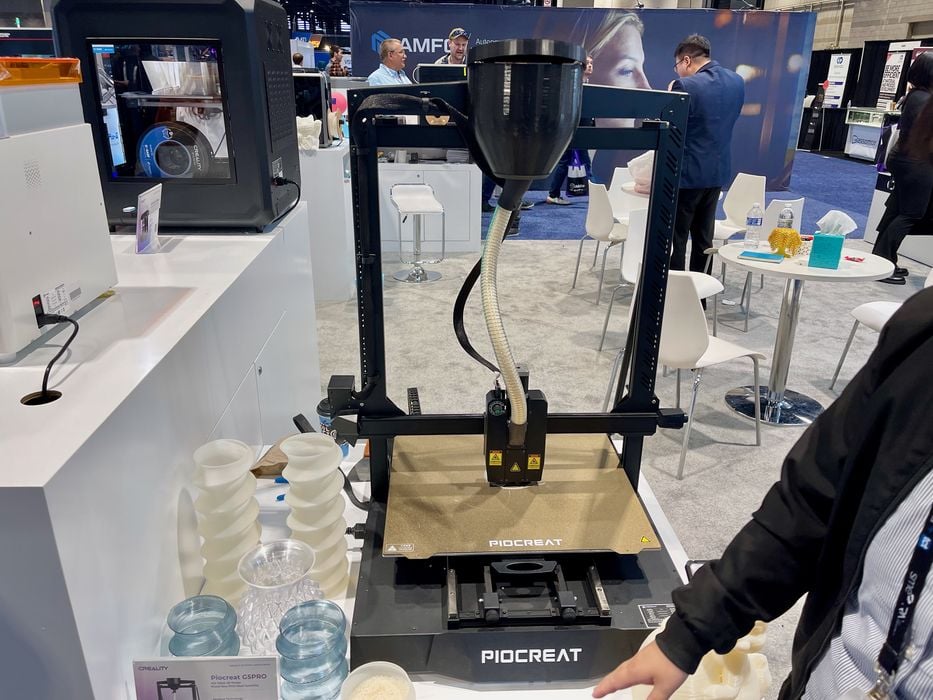
Did you know that Creality produces a desktop 3D printer that uses pellets?
It was news to us too. Interestingly, Creality has a distinct brand for this unique line of equipment, named “Piocreat.” It’s an “FGF” (Fused Granular Fabrication) device, a departure from the familiar “FFF” (Fused Filament Fabrication) technology. We recently got an up-close look at this intriguing machine.
The Allure and Challenges of Pellet 3D Printing
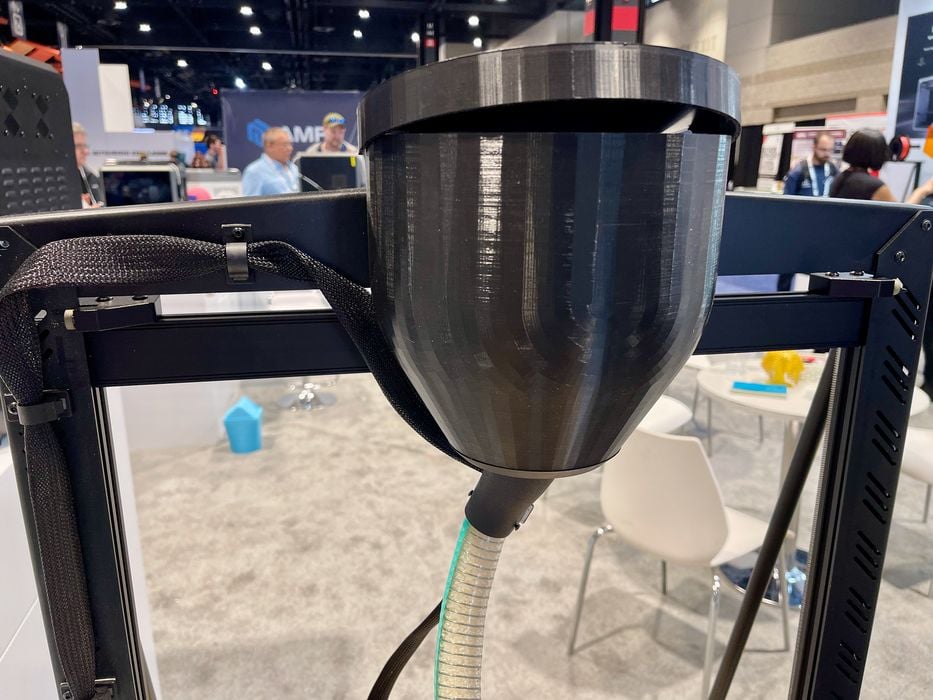
The appeal of pellet 3D printing is largely due to the cost-effectiveness of its input material – the pellets – which are considerably cheaper than filament. The reason is simple: filament is actually made from pellets, so it’s bound to be pricier.
However, 3D printing with pellets presents its own set of challenges. The mechanics differ significantly from standard filament extruders. Instead of gears gripping the filament, there’s an auger pushing pellets into a melt zone. You’ll find a hopper brimming with pellets in place of the usual spool.
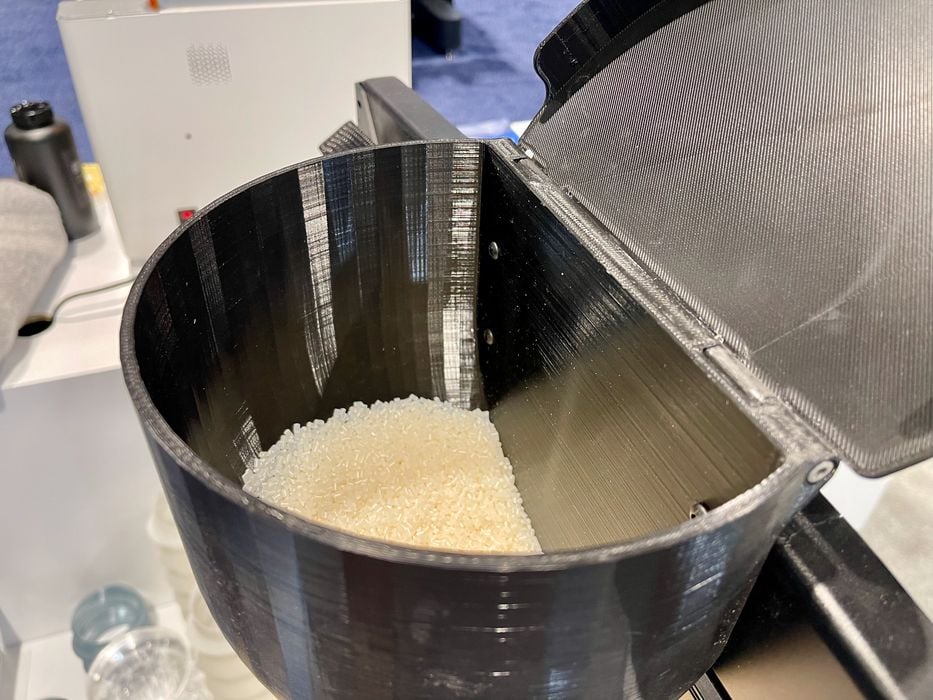
This is precisely what you’ll find on the Piocreat G5 PRO.
A Closer Look at Piocreat’s G5 PRO
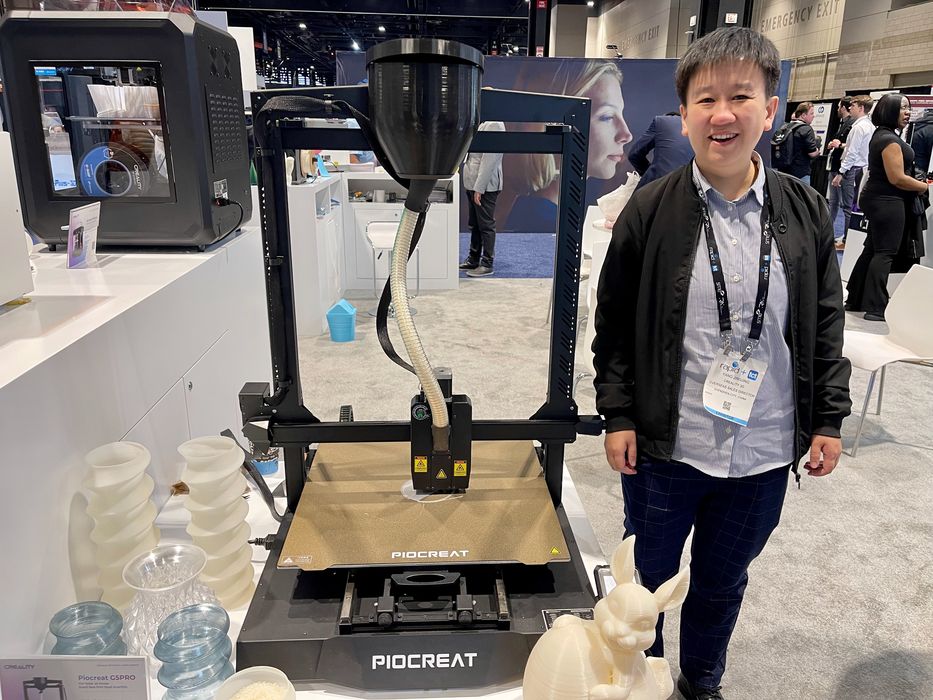
When you encounter the G5 PRO in person, you’ll be taken aback by its size. Its design is strikingly similar to the modern Ender-3 machine, except it’s considerably larger – check out the person for scale in the image above.
The G5 PRO boasts an impressive build volume of 500 x 500 x 500 mm, enabling it to print fairly large objects. With a nozzle temperature that can reach up to 450C, it’s hot enough to handle a variety of engineering materials. However, due to its open gantry structure, there might be some warping. It’s said to be compatible with PLA, PETG, and ABS, with ASA likely working as well. A spring-steel removable print plate ensures easy print processing.
The machine can accommodate nozzles with diameters ranging from 0.4mm to a substantial 3.0mm, paving the way for faster printing.
Speed, Price, and the Future of Pellet-Based Printing
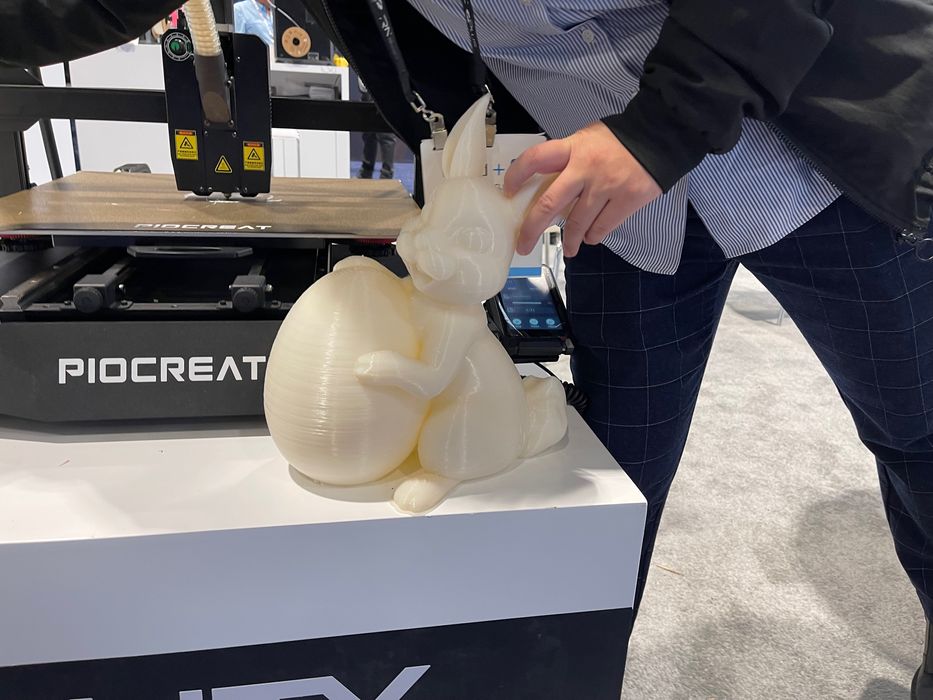
So, how fast can this machine print? Large objects usually entail lengthy print times. However, the G5 PRO turns this expectation on its head. It prints in somewhat coarse layers, ranging from 0.3 to 1.5mm. While the finish might not be as smooth, this approach significantly accelerates the printing process.
Despite the coarseness, the print times are impressive. We were informed that typical parts, like the one shown above, would take between 2-7 hours to complete on the G5 PRO.
As for the cost of this machine, we were given a ballpark estimate of “US$3-4,000,” although the machine doesn’t appear to be for sale on the company’s online store just yet.
Pellet-based desktop 3D printers represent an exciting frontier. It’s not something we’ve seen much of from commercial providers.
The key advantage here is reducing material costs, a selling point that will undoubtedly appeal to those frequently engaged in 3D printing.
I’m curious to see if this pellet-based concept gains traction. I’ll have some further thoughts on desktop FGF equipment soon.
Via Piocreat
